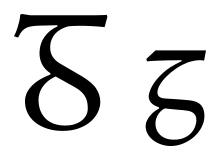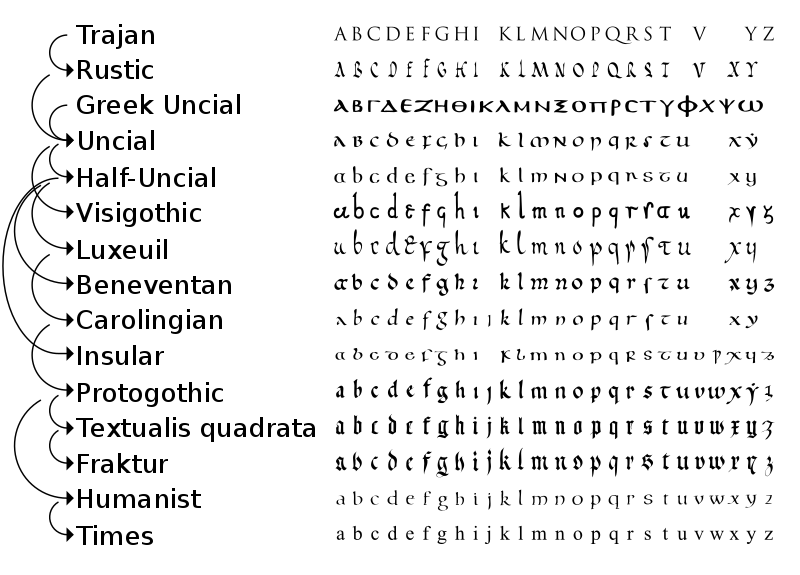Insular G
Insular G (font:Ᵹ ᵹ; image: ![]()

Letter
The lowercase insular g (ᵹ) was used in Irish linguistics as a phonetic character for [ɣ], and on this basis is encoded in the Phonetic Extensions block of Unicode 4.1 (March 2005) as U+1D79. Its capital (Ᵹ) was introduced in Unicode 5.1 (April 2008) at U+A77D. The insular g is one of several insular letters encoded into Unicode. Few fonts will display all of the symbols, but some will display the lowercase insular g (ᵹ) and the tironian et (⁊). Two fonts that support the other characters are Junicode and Tehuti.

| Insular letters in Unicode[1][2] | ||||||||||||||||
| 0 | 1 | 2 | 3 | 4 | 5 | 6 | 7 | 8 | 9 | A | B | C | D | E | F | |
| U+1D7x | ᵹ | |||||||||||||||
| U+1DDx | ◌ᷘ | |||||||||||||||
| U+204x | ⁊ | |||||||||||||||
| U+A77x | Ꝺ | ꝺ | Ꝼ | ꝼ | Ᵹ | Ꝿ | ꝿ | |||||||||
| U+A78x | Ꞃ | ꞃ | Ꞅ | ꞅ | Ꞇ | ꞇ | ||||||||||
Notes
| ||||||||||||||||
The insular form of g is still used in traditional Gaelic script.
Turned insular g
A turned version of insular g (Ꝿ ꝿ) was used by William Pryce to designate the velar nasal ŋ.[1]
See also
References
- Everson, Michael (2006-08-06). "L2/06-266: Proposal to add Latin letters and a Greek symbol to the UCS" (PDF).
External links
- Drawing an insular G (here mistaken for yogh)
- Michael Everson's article On the derivation of YOGH and EZH shows insular g in several typefaces.